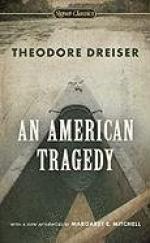|
This section contains 11,171 words (approx. 38 pages at 300 words per page) |

|
SOURCE: "Theodore Dreiser's An American Tragedy: Resistance, Normalization, and Deterrence," in The American Novel and Capital Punishment, University Press of Mississippi, 1997, pp. 45-74.
In the following essay, Guest explores the ways in which Dreiser raised questions about the nature of criminal responsibility in An American Tragedy.
Twenty-six years after the publication of Frank Norris's McTeague, Theodore Dreiser published An American Tragedy, a novel likewise inspired by a well-publicized capital murder case. Dreiser's real-life subject was Chester Gillette, a young man executed by the state of New York in 1908 for the murder by drowning of Grace "Billie" Brown. Gillette came from a poor family and had supported himself by doing odd jobs and menial labor for six years after his parents abandoned him at fourteen. He eventually found work in a factory owned by a wealthy uncle, and although his position and pay were modest, the family connection allowed...
|
This section contains 11,171 words (approx. 38 pages at 300 words per page) |

|


